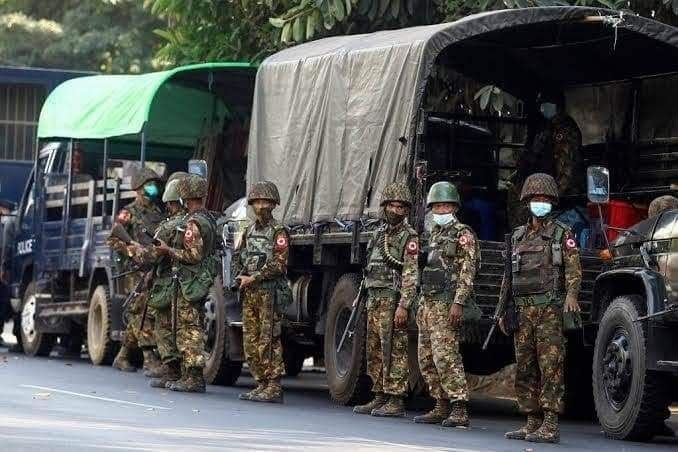The military junta is intensifying its offensive operations to regain control of territories it previously lost, and in some areas, it has managed to reclaim ground.
On July 16, the military recaptured the town of Nawnghkio in northern Shan State, which had been under the control of the Ta’ang National Liberation Army (TNLA). Similarly, on July 7, the junta announced it had regained control of Mo Bye, a town previously seized by Karenni revolutionary forces.
Since the 2021 coup, resistance forces have taken control of more than 90 towns, including some with regional military command centers. However, the junta has since reclaimed five towns—Mo Bye, Nawnghkio, Hsi Hseng, Kawlin, and Lashio.

“It’s true the military has taken back Mo Bye. They launched a heavy assault using drones and large troop deployments. Fighting is still ongoing near the town. As our Commander-in-Chief Ko Marwi said, Mo Bye is a small town, yet it took the military months to reclaim it. That shows how hard they tried,” said Felix, spokesperson for the Karenni National Defense Force (KNDF).
Mo Bye is strategically located along the route from southern Shan State to Loikaw, the capital of Karenni State, making it a key town in the conflict.
In late March of this year, the military also regained control of Hsi Hseng, a town in southern Shan State near the road to Loikaw. Military analysts say that airstrikes, operations by the Pa-O National Army (PNA), drone warfare, and the deployment of militia graduates were all widely used in the battle for that town.
Similar tactics were employed in the battle for Nawnghkio, which lies along a key access route into towns held by northern Shan resistance forces.
CDM Captain Zing Yaw observed, “The resistance has manpower and strong fighting capacity, but they lack ammunition. That’s the main disadvantage. On the other hand, ethnic resistance leaders value their fighters, but the military doesn’t. Even if their soldiers die, they always have more. They can lose thousands and still send another 5,000 next week.”
The junta has not only regained lost territory through heavy attacks but also retook Lashio—previously held by the Myanmar National Democratic Alliance Army (MNDAA)—with reported assistance from China.
Lashio, headquarters of the military’s Northeastern Command, is strategically important, but before the recent campaign, analysts believed the junta was not in a position to retake it.
The junta also reclaimed Kawlin, which had been seized by joint People’s Defense Forces (PDFs) under the National Unity Government (NUG).
In Sagaing Region, both Dipeyin and Kani were once captured by resistance forces but had to be abandoned the same day due to intense junta airstrikes.
“Our comrades sacrificed a lot. We poured in money—which really means ammunition—and manpower. After winning, we had to retreat. It was heartbreaking,” said Ko Lat from the Dipeyin Township People’s Defense Force. “Given the situation in Sagaing, there wasn’t much we could do.”
In recent days, the military has been conducting daily airstrikes and ground offensives in central Myanmar, Karenni State, and TNLA-controlled areas in northern Shan State.
Observers say the junta’s push to retake lost territories is part of its effort to reassert territorial control ahead of the national election scheduled for the end of this year.
